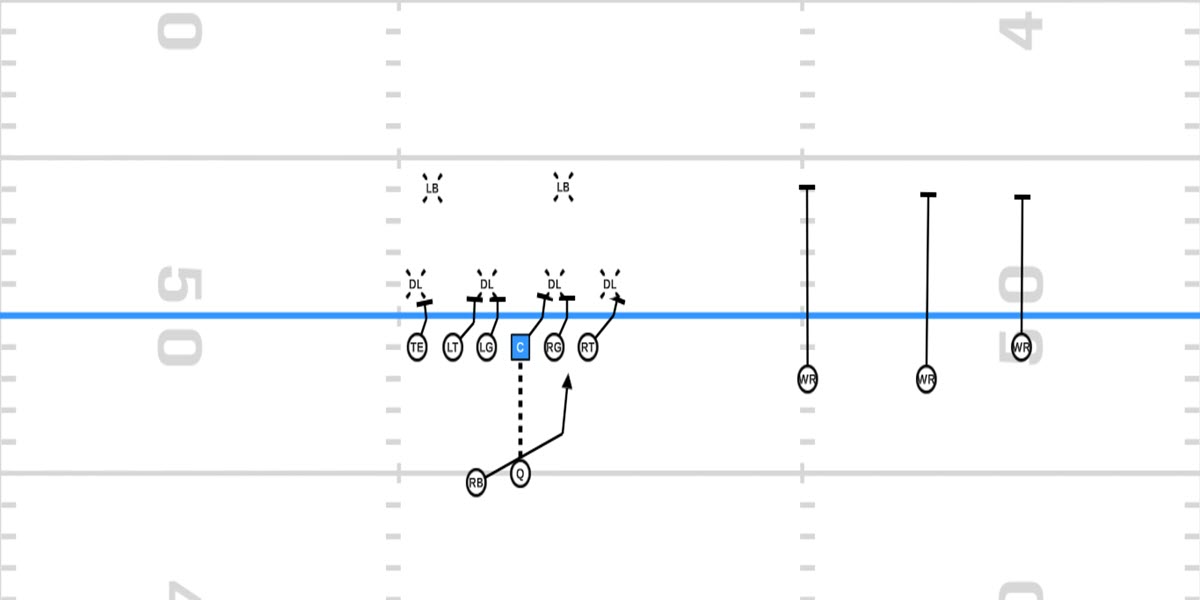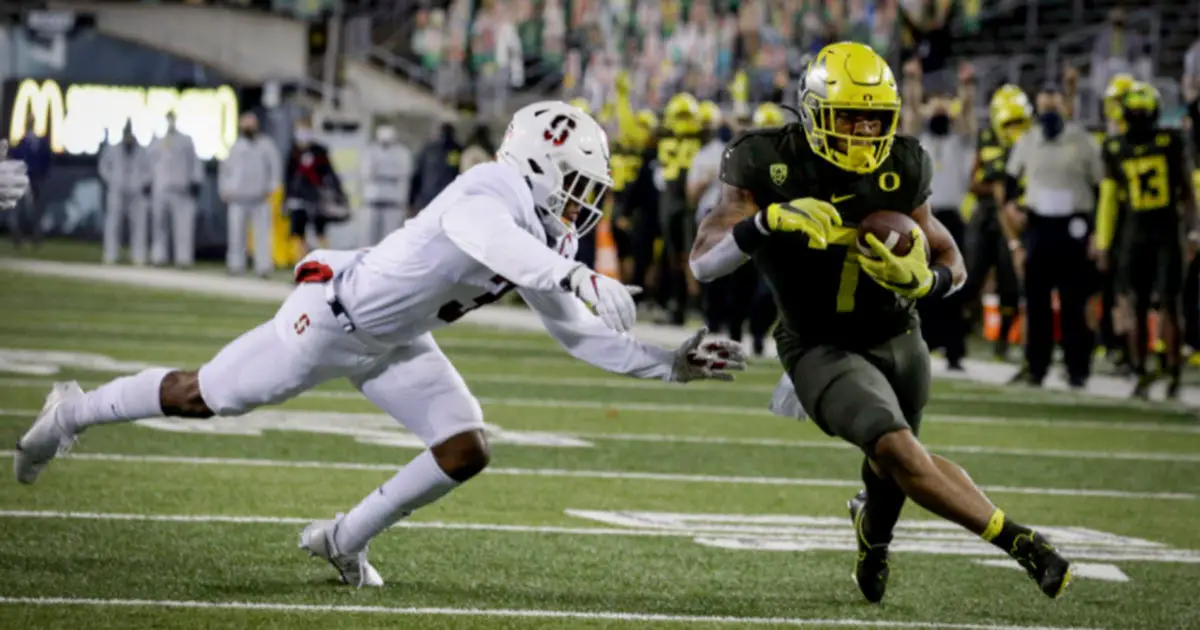While Coach Chip Kelly was in charge, the Oregon Ducks often went to the Outside Zone to get around defenses. In this play, the offensive line would work laterally to get an angle on the defense and spring the running back to the outside. With Coach Mario Cristobal at the helm, the Ducks have often gone to the Wide Zone. At first glance, you could easily mistake the OZ and WZ for one another, but there are actually some philosophical differences between them.

Wide Zone
Where the Outside Zone tries to get to the outside of the defense, the Wide Zone looks to stretch the defense first and then puncture it. Coach Alex Mirabal even stated that with the Wide Zone they are not looking to go around defenders, but through them. It’s a play that uses the defense’s movement against it, but also sticks with the physicality that this Oregon offense is built on. Though the option to bounce the ball outside is an option, should the defense dictate it, the ball carrier is more often than not going through the heart of the defense.
The rules for offensive linemen in the Wide Zone are pretty straight forward. They are broken up into covered and uncovered linemen. Any OL is covered if they are shaded or directly heads up with a defender. If the lineman is covered he is going to take his backside knee through the center of the defender, his backside hand through his sternum and his playside arm is targeting the playside arm pit of the defender.
If the lineman is uncovered, he has a three step decision to make. By his third step, he must decide whether he’s going to take over the block from the covered lineman, knock it over or climb to the second level. If the defender crashes back, the uncovered OL will take the block over. Should the defender be going with the flow, trying not to be reached, the uncovered OL will climb to the linebacker.
As far as the running back is concerned, his aiming point is the backside of the tight end, or the ghost tight end if there is none. His first read is the playside defensive end. Should the defender crash hard to the inside, the RB can run to the outside. The second read is the next inside DL; this is how the RB will choose his inside gap. Overall, the back’s job is to stretch the defense, by pressing the edge, and then puncturing the inside. This allows the RB to use the pursuit of the defense against them.
In the clip above, the right tackle, right guard, left guard and tight end are all covered. If you look closely, you can see the techniques described above. The same is true for the center and left tackle, who are uncovered in this clip. The running back presses the edge of the defense before puncturing the middle, and nearly takes the ball to the house.
There is another technique that the Ducks use in the Wide Zone. Should the linebacker have leverage that will allow him to shoot the gap before the covered OL can pass the first level block off to his uncovered teammate, they can make a call for a Fold block. This is a call made by the players on the field. In the clip above, you can see that the left tackle Penei Sewell executes the Fold block by pulling around the left guard’s block, and blows up the linebacker.
The Wide Zone is firmly within the physical style of run game that the Oregon offense is built on, and one that has served them well. Watch for it this season!
Coach Eric Boles
Newark, Ohio
Top Photo Credit: UO Athletics
Next Article is tomorrow!
Eric resides in Central Ohio, just outside the capital city of Columbus. He is a former offensive assistant and return game coordinator for the Ohio State – Newark/Central Ohio Technical College Titans football program.
He is an OSU-N graduate, having completed a Bachelor of Arts program in psychology.

